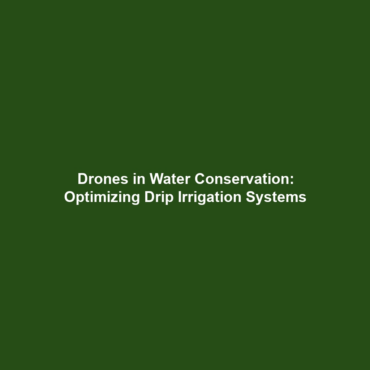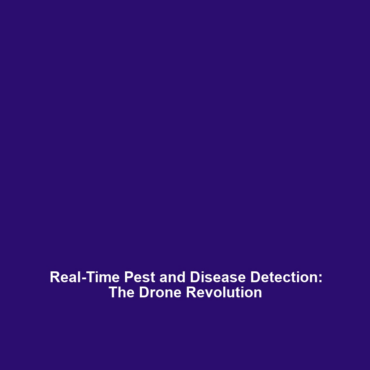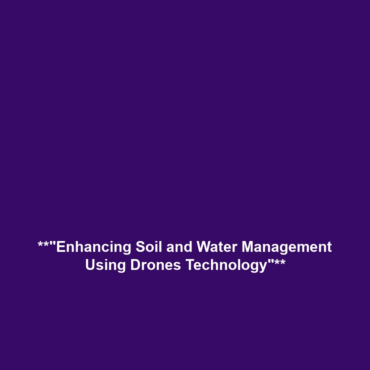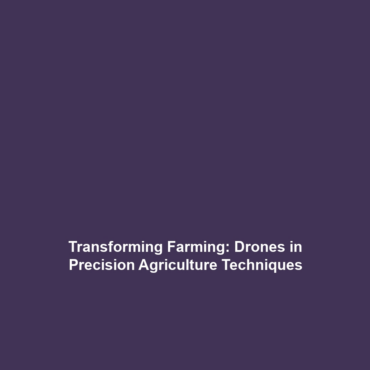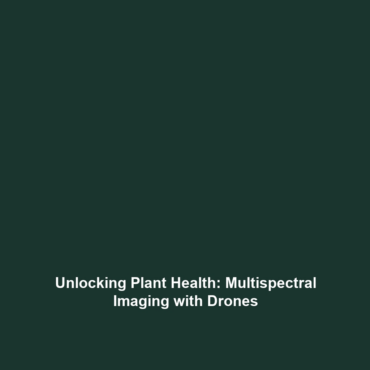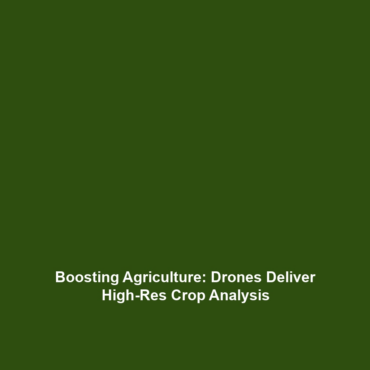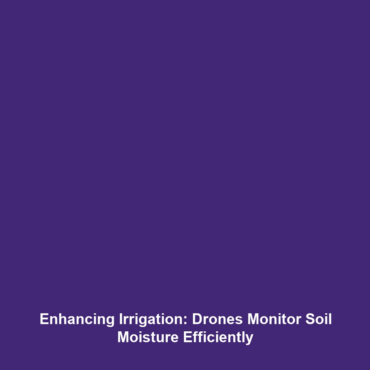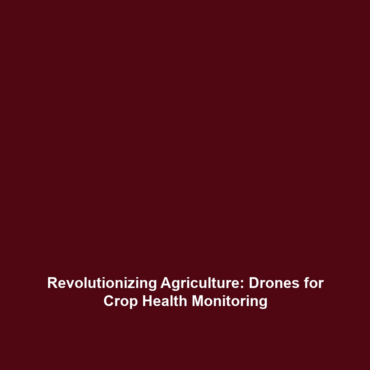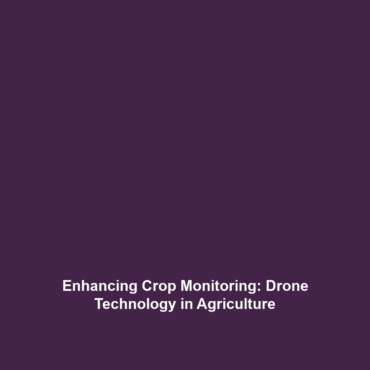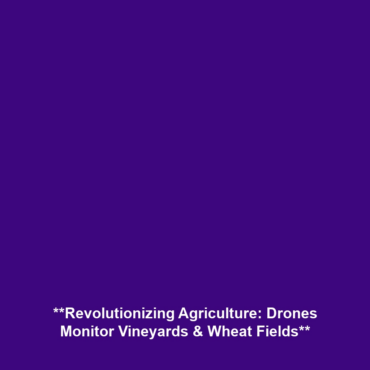The Role of Drones in Water Conservation: Optimizing Drip Irrigation Systems
Drones are transforming various fields, and one of the most significant contributions they make is in water conservation, particularly through the optimization of drip irrigation systems. As the global demand for water increases, innovative technologies like drones are becoming crucial in managing and conserving water resources efficiently. By providing precise data and critical insights, drones play an instrumental role in enhancing agricultural practices essential for sustainability within the broader context of Drones in Science.
Key Concepts
Understanding the role of drones in water conservation includes several key concepts:
- Precision Agriculture: Drones enhance precision crop management by monitoring soil moisture and optimizing irrigation schedules.
- Remote Sensing: Equipped with advanced sensors, drones can collect real-time data on crop health, water stress levels, and soil conditions.
- Aerial Imagery: High-resolution images taken by drones help in assessing irrigation efficiency and detecting areas requiring intervention.
These principles are essential in the context of Drones in Science, where technological integration fosters innovative solutions for environmental challenges.
Applications and Real-World Uses
The applications of drones in water conservation, especially in optimizing drip irrigation systems, are vast and impactful:
- How Drones Are Used in Agriculture: Farmers are utilizing drones to monitor crop health and soil moisture, allowing them to adjust their irrigation practices effectively.
- Applications in Smart Farming: Drones provide actionable data that helps farmers implement smart irrigation techniques, significantly reducing water waste.
- Case Studies: Various regions, such as California’s Central Valley, showcase successful drone integrations where water usage has been optimized by 20% through targeted irrigation methods.
Current Challenges
Despite the advancements, there are several challenges in studying or applying the role of drones in water conservation:
- High initial costs of drone technology and related infrastructure.
- Regulatory hurdles surrounding drone usage in agricultural settings.
- Lack of standardized data interpretation methods across different farms and regions.
- Technical expertise required for effective operation and maintenance of drone systems.
These issues in Drones in Science hinder broader adoption and effectiveness in water conservation efforts.
Future Research and Innovations
Innovations in drone technology hold promise for the future of water conservation:
- Next-Gen Sensors: Advancements in sensor technology could lead to more accurate and efficient data collection for moisture monitoring.
- AI Integration: Artificial intelligence may further optimize irrigation strategies based on predictive analytics derived from drone data.
- Collaboration with IoT: Enhanced data exchange between drones and IoT devices can create comprehensive irrigation management systems.
These breakthroughs are likely to push the boundaries of how we understand and utilize Drones in Science for environmental sustainability.
Conclusion
The role of drones in water conservation, particularly in optimizing drip irrigation systems, is vital for addressing global water scarcity challenges. By leveraging advanced technology, farmers can enhance their irrigation practices, significantly contributing to sustainable agricultural practices. As research progresses, we can expect continued innovation in this field, urging stakeholders to adopt drone technologies for better water management.
For more information on how technology is impacting agriculture, explore our other articles on smart agriculture and drone technology advancements.
